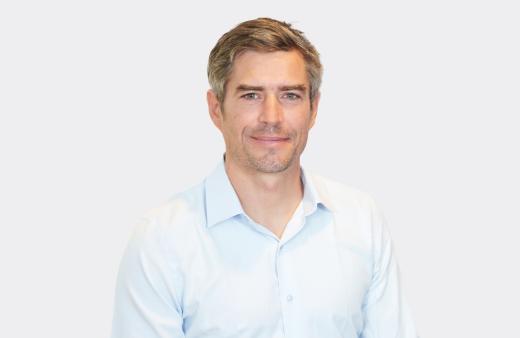Interview with Professor Antoine Piau on how Clariane is redefining care for people living with Alzheimer’s disease

Professor Antoine Piau, Medical, Ethics and Health Innovation Director for the Clariane Group, shares his innovative perspectives on Alzheimer’s care within our facilities. He highlights the importance of early detection, the role of non-pharmacological interventions, and the concept of “maisonnées”. Our approach is comprehensive and proactive, with the aim of continuously improving the quality of life of people we care for with Alzheimer’s disease.
Is early detection of Alzheimer’s disease really crucial to improving patients’ quality of life?
Prof. Antoine Piau - Alzheimer’s disease is often diagnosed too late. Around a third of people are diagnosed but far too late. The real challenge is early diagnosis. The use of early diagnosis is sometimes questioned as there is no cure. But this is not entirely true. It has been proven that modifiable factors can slow the progression of the disease. It is estimated that these factors can affect up to 40% of people suffering from Alzheimer’s (The Lancet)).
This idea is not unfounded: there are ways of taking action, without medication or therapy. Modifiable factors, such as cardiovascular risk, social links, combatting undernourishment, and physical activity, all play an essential role. Physical activity, for example, slows the progression of the disease.
By diagnosing the disease earlier, patients can remain in control of their future.
This year, several dozen Korian facilities – the Clariane Group care homes – are offering public consultations for a month from 16 September in France.
It’s an excellent initiative. It’s vital that care homes are increasingly seen as a resource for local care. We’re working hard on this in order to integrate our facilities into a well-coordinated network between the public and private sectors, so that they don’t operate in isolation in their local area.
What non-pharmacological interventions are available for people with Alzheimer’s disease? What do they involve?
Prof. Antoine Piau - Non-pharmacological interventions play a key role in improving the well-being of people with Alzheimer’s, even in advanced stages. These include the concept of sensory stimulation (hearing, smell, sight, taste and touch) to create a calming environment and improve behavioural disorders. In addition, there are devices such as the flash cart, a portable version of the Snoezelen (a sensory stimulation area found in many facilities), and enhanced and adapted video games to work on coordination or stimulate physical activity.
Other complementary therapies, such as music therapy, pet therapy and art therapy, are also used. These interventions are classified according to their impact on functions (motor or cognitive) and must be scientifically validated to ensure their effectiveness and safety. We use around thirty non-pharmacological interventions within our network, and this number is constantly evolving as Clariane employees are continuously adopting new scientific advances and successes observed in the field.
Non-pharmacological interventions are an integral part of our philosophy of care, Positive Care, which consists of caring for a person, not a disease, in a personalised way that limits the risk of medicine-related illness. These interventions make it possible to avoid psychotropic drugs and other physical or chemical treatments.
Are maisonnées in care homes a way of improving residents’ quality of life?
Maisonnées are living units inspired by the Dutch model, where staff adapt to the rhythm and pace of the residents. For example, if a resident prefers to have breakfast at 10 a.m. rather than 7 a.m., this can be arranged. We have set up such arrangements in some of our Korian facilities in France. Each maisonnée houses around 10 to 12 residents, and one facility may have several units.
The flexibility of this system requires a far-reaching reorganisation, going well beyond simple adjustments to service hours. Each unit is run by a manager, often a personal care assistant, who is responsible for a group of residents and has greater autonomy in organising care.
The model works very well in the facilities where it has been set up, and is now sustainable. We know that we will be able to maintain this model, but there are limits to how far we can roll it out, not least because of architectural constraints. In some countries where we operate, this model cannot be applied in the same way. But that doesn’t mean that we shouldn’t do anything!
It is in this context that we have set up a European working group within Clariane to establish a systematic assessment of residents’ rhythms of life, over and above their life stories, which is already a systematic step. Such an assessment upon admission does not yet exist in hospitals or elsewhere. Yet, simple questions are asked, such as, “How long do you sleep?”, “What time do you go to bed?”, “What time do you have breakfast?”. Until now, this aspect of life rhythms has been neglected, despite efforts to better understand residents’ lives.
This work began towards the end of 2024, and the initial feedback has been positive. We plan to extend this assessment to the whole community in early 2025.
With this assessment, our aim is to identify, facility by facility, to what extent it is possible to improve respect for these rhythms of life to varying degrees according to the constraints of each.
